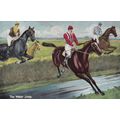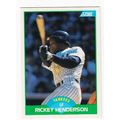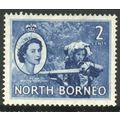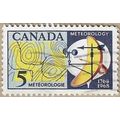Berlin - Europa-Center with Haus der Nationen 1960s
- Condition : Used
- Dispatch : 2 Days
- Brand : None
- ID# : 34349312
- Quantity : 1 item
- Views : 663
- Location : United Kingdom

- Seller : justthebook (+1704)
- Barcode : None
- Start : Sun 21 Nov 2010 01:51:00 (BST)
- Close : Run Until Sold
- Remain : Run Until Sold
More Listings from This Seller view all
Seller's Description
- Postcard
- Picture / Image: Berlin - Europa-Center mit Haus der Nationen
- Publisher: Kruger
- Postally used: no
- Stamp: n/a
- Postmark(s): n/a
- Sent to: n/a
- Notes & Key words: slight foxing on back
------------------------------------------------
Postage & Packing:
UK (incl. IOM, CI & BFPO): 99p
Europe: £1.60
Rest of world (inc. USA etc): £2.75
No additional charges for more than one postcard. You can buy as many postcards from me as you like and you will just pay the fee above once. (If buying postcards with other things such as books, please contact or wait for invoice before paying).
Payment Methods:
UK - PayPal, Cheque (from UK bank) or postal order
Outside UK: PayPal or Google Checkout ONLY please. NO non-UK currency checks or money orders (sorry).
NOTE: All postcards are sent in brand new stiffened envelopes which I have bought for the task. These are specially made to protect postcards and you may be able to re-use them. In addition there are other costs to sending so the above charge is not just for the stamp!
----------------------------------------------
Text from the free encyclopedia WIKIPEDIA may appear below to give a little background information:
*************
The Europa-Center is a building complex on the Breitscheidplatz in Berlin, notable for its high-rise tower. During the 1960s it became one of the iconic sights of West Berlin, along with the Kaiser Wilhelm Memorial Church. It is a historically preserved building.
The site of the present-day Europa-Center in "New West" Berlin (also known as "City-West") was from 1916 home to the Romanisches Café? (Romanic Café?), a legendary meeting place for writers, artists and people in the theatre business, as well as those who aspired to join them. After being bombed during the Second World War in November 1943 the building lay in ruins. For a decade the premises were used only intermittently, according to need. Makeshift constructions were used variously by wrestlers, circus performers and missionaries, followed by food outlets and briefly a cinema hosting so-called "fashion films". A local newspaper saw the site as a "blot on Berlin's tourist profile".
Soon after the division of the city by the construction of the Berlin Wall in 1961, the situation changed. New buildings were politically desirable and were encouraged, as symbols of West Berlin's vitality and durability. The Breitscheidplatz, a square in the central part of the western half of the city, needed further improvement in addition to the recently finished Kaiser Wilhelm Memorial Church. The successful Berlin businessman and investor Karl Heinz Pepper was appointed to oversee construction. He commissioned Helmut Hentrich and Hubert Petschnigg to design and build an office and shopping centre following the American model. Egon Eiermann, architect of the Memorial Church, was involved as an artistic advisor. Construction work began in 1963, and on 2 April 1965 the Europa-Center was inaugurated by Mayor Willy Brandt.
What had been built was a complex with a total floor space of 80,000 square metres, divided into distinct units: a two-storey foundation with a basement and two inner courtyards, a cinema, a hotel, an apartment block, and the box-shaped high-rise with a height of 86m, 21 storeys and 13,000 square metres of office space, at the time the only one of its kind in Berlin and hence a defining feature of Berlin's urban geography, frequently referenced in other designs. Numerous renovations and modernisations since then have served to increase the attractiveness and hence the commercial success of the building. For example the inner courtyards have been given canopies, and the skating rink in one of the courtyards was removed in 1979. In 1995 the operators of the complex gave the number of shops and food outlets as around 100, with between 20,000 and 40,000 visitors daily.
On top of the high-rise, and visible across Berlin, is a large metal star-in-a-circle symbol, the logo of car manufacturer Mercedes-Benz. It weighs 15,000kg, has an outer diameter of 10 metres, completes approximately two revolutions a minute, and glows at night with the help of 68 fluorescent tubes. It can be tilted back for maintenance work, and in stormy weather it automatically turns into the wind.
The "Clock of Flowing Time" (Uhr der fließenden Zeit) in the western courtyard portrays the passing of hours and minutes in twelve-hour cycles. Globules of coloured water flow up and down a tower through a system of communicating tubes in such a way as to display the current time. The system is emptied every day at 1am and 1pm and the cycle begins again.
pool in the second courtyard contains the Lotus Fountain, by the Parisian artists Bernard and Francois Baschet, a "water play" with optical and acoustical elements. It was originally commissioned for the staircase of Berlin's New National Gallery and was installed there in 1975. It was deemed expendable in 1981 and was transferred to the Europa-Center in 1982 for free as an extended loan.
Listing Information
| Listing Type | Gallery Listing |
| Listing ID# | 34349312 |
| Start Time | Sun 21 Nov 2010 01:51:00 (BST) |
| Close Time | Run Until Sold |
| Starting Bid | Fixed Price (no bidding) |
| Item Condition | Used |
| Bids | 0 |
| Views | 663 |
| Dispatch Time | 2 Days |
| Quantity | 1 |
| Location | United Kingdom |
| Auto Extend | No |


 for 1 item(s)
for 1 item(s)
















